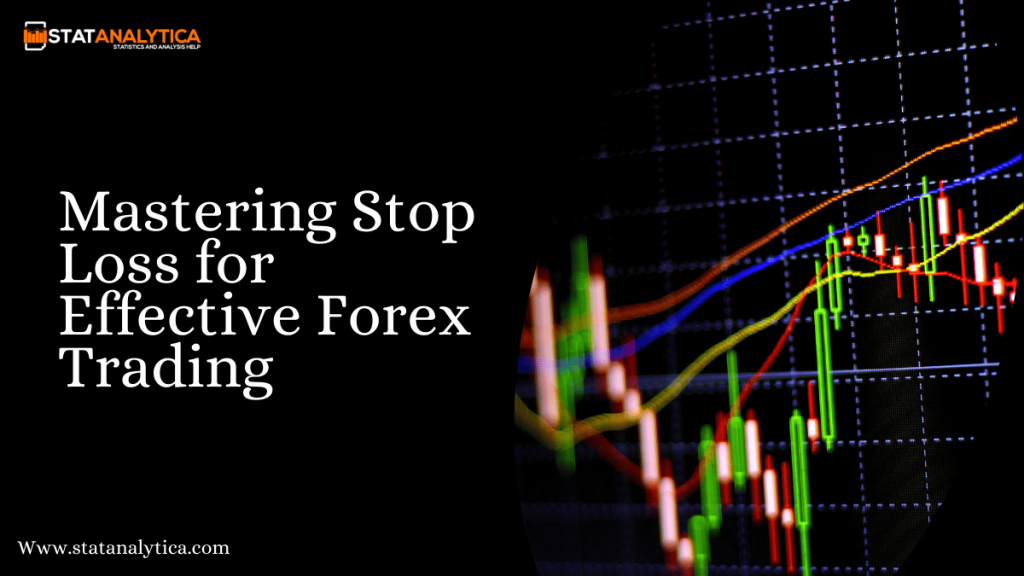Forex trading is a high-stakes game where managing risk is just as important as taking advantage of chances. The stop-loss order is a powerful instrument for limiting losses and safeguarding gains. Traders can trade more confidently in unpredictable markets with the support of stop-loss orders, which restrict losses and keep trading methods intact. This article will answer the main question: what does stop loss mean? Explore the significance of stopping loss in foreign exchange trading and how to use it effectively to protect your capital and improve your trading success.
Effective Forex Trading: Recognizing the Significance of Stop Loss
Table of Contents
You can set a stop-loss order with your broker to buy or sell an asset at a specific price. This essential tool for managing risk closes a deal immediately when the market goes against the trader’s position, lowering losses.
As an illustration, suppose you purchase a currency pair at 1.2700 and set a stop loss at 1.2550. If the price falls to 1.2550, your transaction will be instantly closed, protecting you from further losses should the market continue to collapse.
- Safeguarding against significant setbacks: Particularly in highly volatile markets, traders run the danger of losing a substantial amount of money if they do not use a stop loss.
- Discipline in emotions: With a stop loss in place, traders are less likely to cling to losing deals, hoping for a market reversal.
- Robots: Automated stop-loss orders relieve traders of the emotional burden of always monitoring their trades, which is a common problem in Forex.
When it comes to understanding and using stop losses, protecting your trading money and maintaining a disciplined trading approach are just as important as limiting losses.
Stop Loss Order Types
Traders can employ a variety of stop-loss orders, each tailored to a particular trading strategy and market circumstances. If you want to be a successful trader, you need to know when and how to use each type.
Fixed Stop Loss
The price at which a fixed stop loss is established does not change no matter how long the trade continues. This style is popular among new traders because it is easy to use.
- Effortless to comprehend and execute. It lays out the parameters within which you can make trades with confidence.
- Premature stops or needless losses can occur since it doesn’t adapt to shifting market conditions.
You should use a fixed stop loss when you are pretty sure of the market’s direction and don’t think it will dramatically reverse against your position.
Trailing Stop Loss
You can ride the wave of a rising market price with a trailing stop loss. The trailing stop loss will change to reflect any price movement that supports your trade. The stop loss, however, will stay in its previous position in the event of a market reversal.
- Traders can lock in profits while still allowing room for growth in the transaction.
- A trailing stop loss adjusts to market changes, keeping the stop loss in play as the deal develops.
In trending markets, where prices can move substantially in one direction over time, the trailing stop loss is especially effective.
Establishing a Limit Stop Loss
One of the most critical aspects of risk management is finding the optimal stop-loss level. Setting it at a level that allows your trade some breathing space while safeguarding your funds from excessive losses is crucial.
Weaknesses and Strengths
In order to protect long positions from potential losses, stop-loss orders are often placed just below support levels or just above resistance levels. Market reversals at support and resistance levels provide essential clues about where prices are likely to go next.
- A price at which demand is high enough to limit further price declines is called the support level.
- When selling pressure becomes sufficiently strong, the price is said to have reached a resistance level and will not rise any further.
Setting your stop loss beyond these levels will help you avoid being caught off guard by short-term changes in the market.
Volatility-Based Stop Loss
When deciding how high to set a stop loss, volatility-based stop loss factors in how volatile the market is because prices in highly volatile markets might change a lot in a short amount of time; it’s essential to use broader stop losses.
- Indicators of volatility: Use indicators like the average true range (ATR) to determine how volatile the market is and adjust your stop loss levels.
- Expanded pauses: A broader stop loss will help your transaction weather price swings in unpredictable markets.
This strategy really shines when trading in highly volatile markets, as regular price swings are more likely to trigger tighter stop losses.
Avoiding Common Mistakes
Although a stop-loss strategy is effective, it can result in loss if not utilized properly. Avoiding typical pitfalls can improve your stop-loss strategy for Forex trading.
The market’s usual ups and downs can halt your entry if you place your stop loss too close to it. Allow sufficient room for your transaction to move before the market reaches your stop loss level.
Price fluctuations are affected by the market’s volatility, the timing of economic data releases, and general sentiment. Consider these criteria when adjusting your stop loss levels.
Stop loss is critical, but it’s unwise to depend on it alone without thinking about other ways to manage risk, such as diversification and position sizing.
| Also Read: Top 50+ Most Expensive American Colleges |
Being Successful in Trade
Employing stop-loss orders effectively is a crucial part of risk management that can greatly affect your trading success in Forex. Learn the many kinds of stop-loss orders, adjust their settings according to market conditions, and steer clear of typical pitfalls to safeguard your capital and boost your profits. Remember that a stop loss is there to help you trade more disciplinedly, which will lead to more success in the long run, not only to limit your losses.


